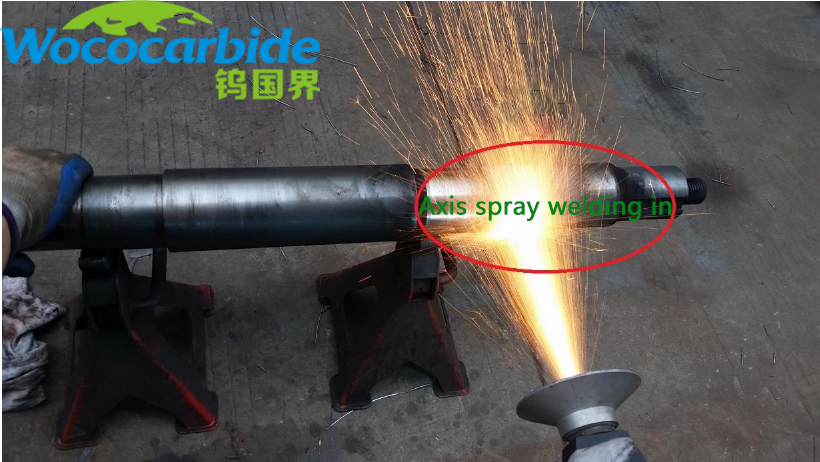

current position:Information and data>Thermal spray coating grinding
For coatings to precise dimensions and high finish, as well as for hard and brittle ceramic coatings, grinding is the only practical method.

When grinding the coating, it should be noted that the forging or casting of the same material is very different from grinding. Excessive grinding pressure will cause the transfer or movement of particles on the coating surface, and even cause coating cracks. Due to the poor thermal conductivity of the coating, there should be enough cooling medium when grinding. The key to grinding is the selection of grinding wheel and grinding process parameters.
The selection of grinding wheels should take into account the type of coating, the hardness and structure of the coating, the size of the workpiece, the amount of grinding and surface roughness requirements, the type, state and capacity of the grinding machine. The principles of grinding wheel selection are as follows.
a) Use the sharpest grinding wheel possible. Make it cutting fast without overheating. The silicon carbide grinding wheel presents a new sharp cutting edge during the grinding process, which can obtain a finer grinding surface. Diamond grinding wheels are durable and cleanly grind a variety of carbides, metals, ceramics and cermets. Alumina is used only for grinding certain alloy steels.
b) Select the structure and hardness level of the grinding wheel. Satisfy the desired grinding effect. When a light grinding pressure is used or a higher grinding speed is required, a softer grade of grinding wheel should be used to make the contact area large; when a heavy grinding pressure or a lower roughness is required, a softer grinding wheel should be used. Hard grade grinding wheel.
c) Select the most suitable type of binder. The types of adhesives are ceramic adhesives and thermosetting resin adhesives. Ceramic binders are generally used for metal coatings. Grinding speeds can be increased and precise fit tolerances can be achieved, independent of water, acid, oil and temperature changes. Resin binders are generally chosen for ceramic coatings for rapid grinding and low surface roughness.
d) Select the appropriate grinding wheel abrasive particle size. To process a lower roughness, a grinding wheel with finer grit should be used. Coarse grinding can use 30-60 mesh particle size, fine grinding can use 60-120 mesh particle size.
It is also important to pay attention to wheel setup, as slight uneven grinding pressure can result in inaccurate dimensional tolerances, high roughness and damage to the coating.
The grinding process mainly consists in determining the grinding parameters. Wheel speed affects both productivity and roughness, with lower speeds making the wheel appear softer, while higher speeds will make the same wheel appear harder. The grinding action of the grinding wheel can also be changed by changing the speed of the workpiece. As the workpiece temperature increases, the grinding wheel will become more abrasive. Slowly moving the workpiece laterally will improve the surface roughness. For low-power machines, a narrower wheel should be used when grinding hard coatings at high speeds.
Grind as wet as possible under any circumstances, which reduces surface roughness and does not damage the coating. For coating grinding operations, the grinding wheel should be dressed regularly and the correct dressing process should be performed.
Hot information

